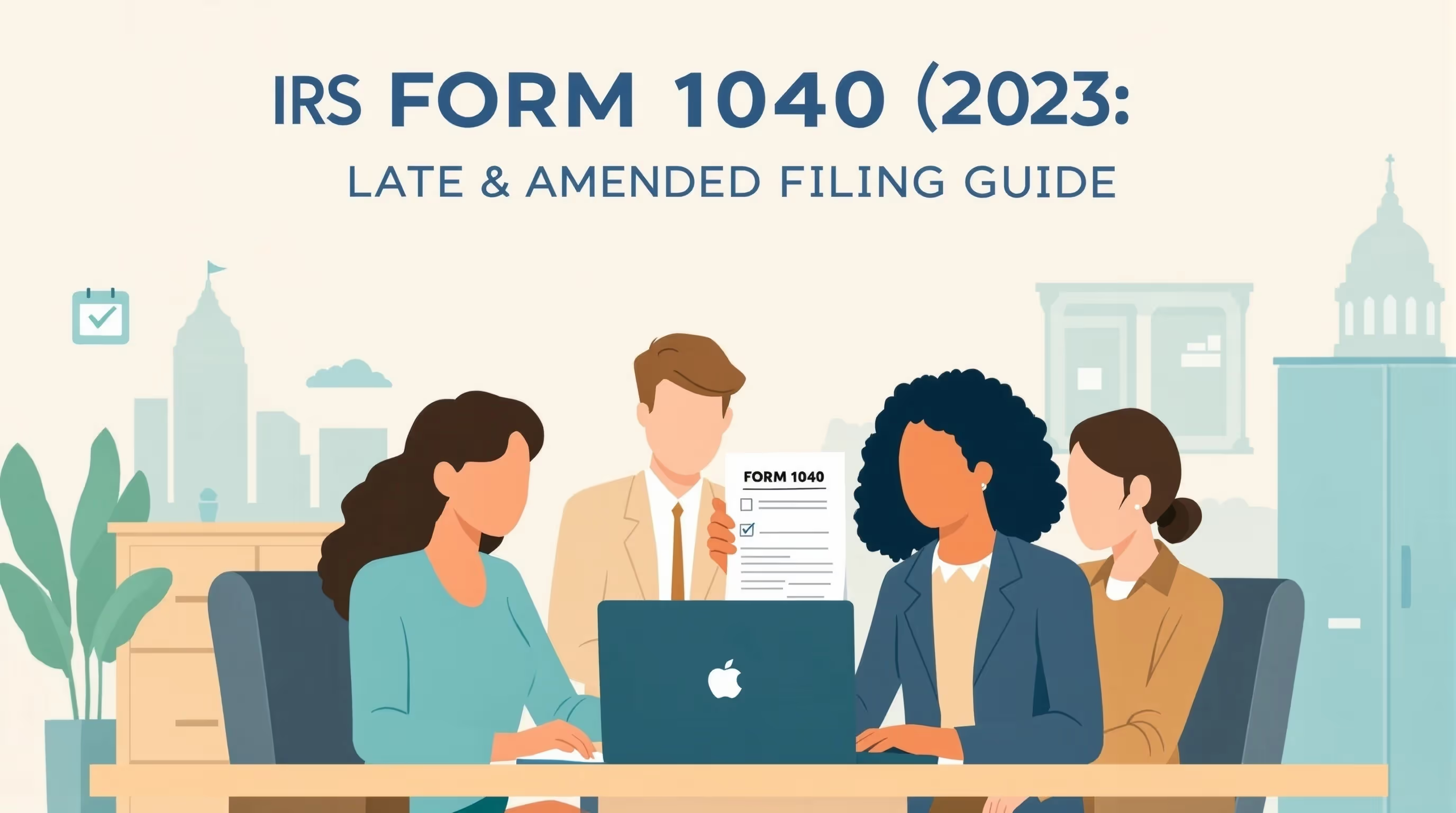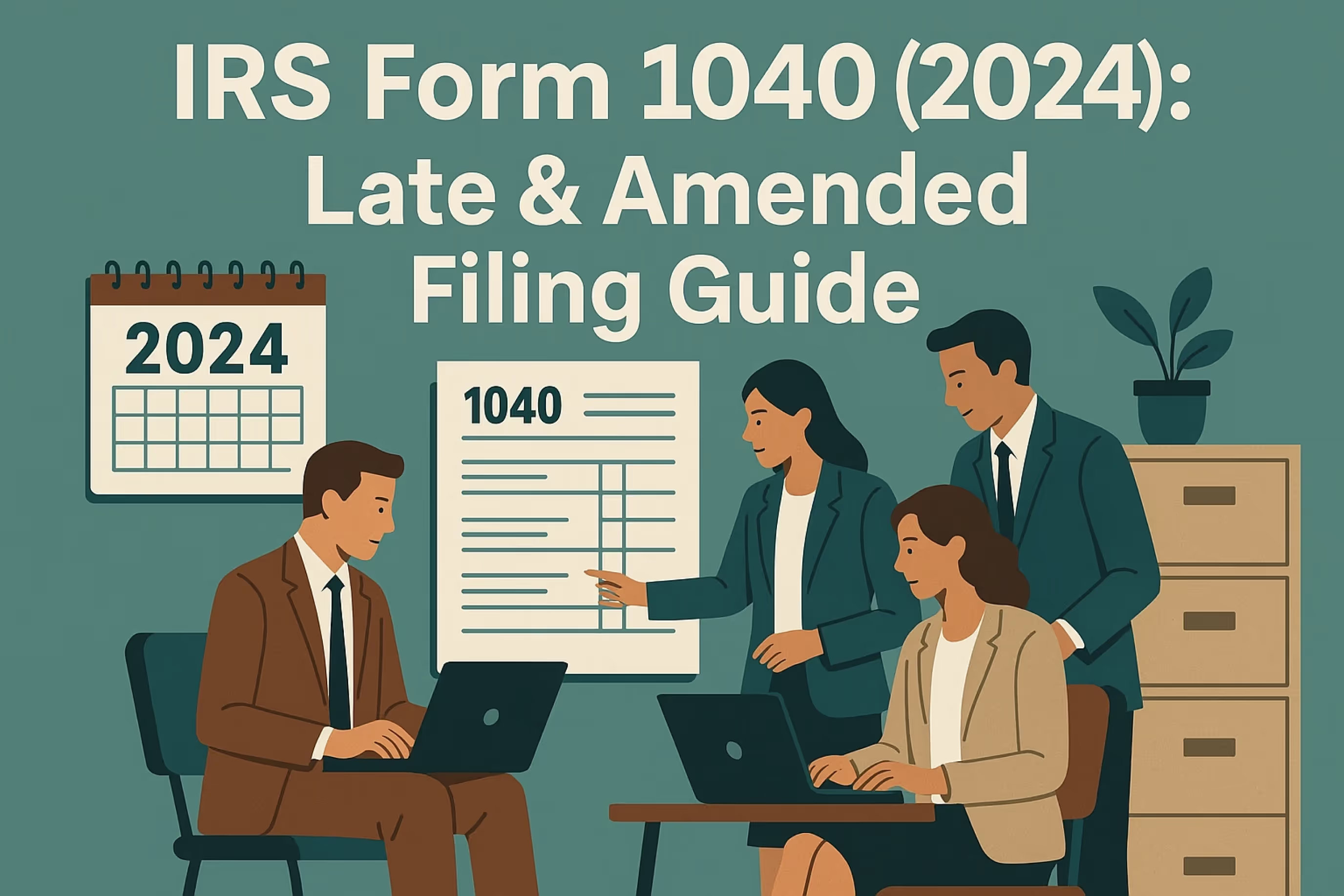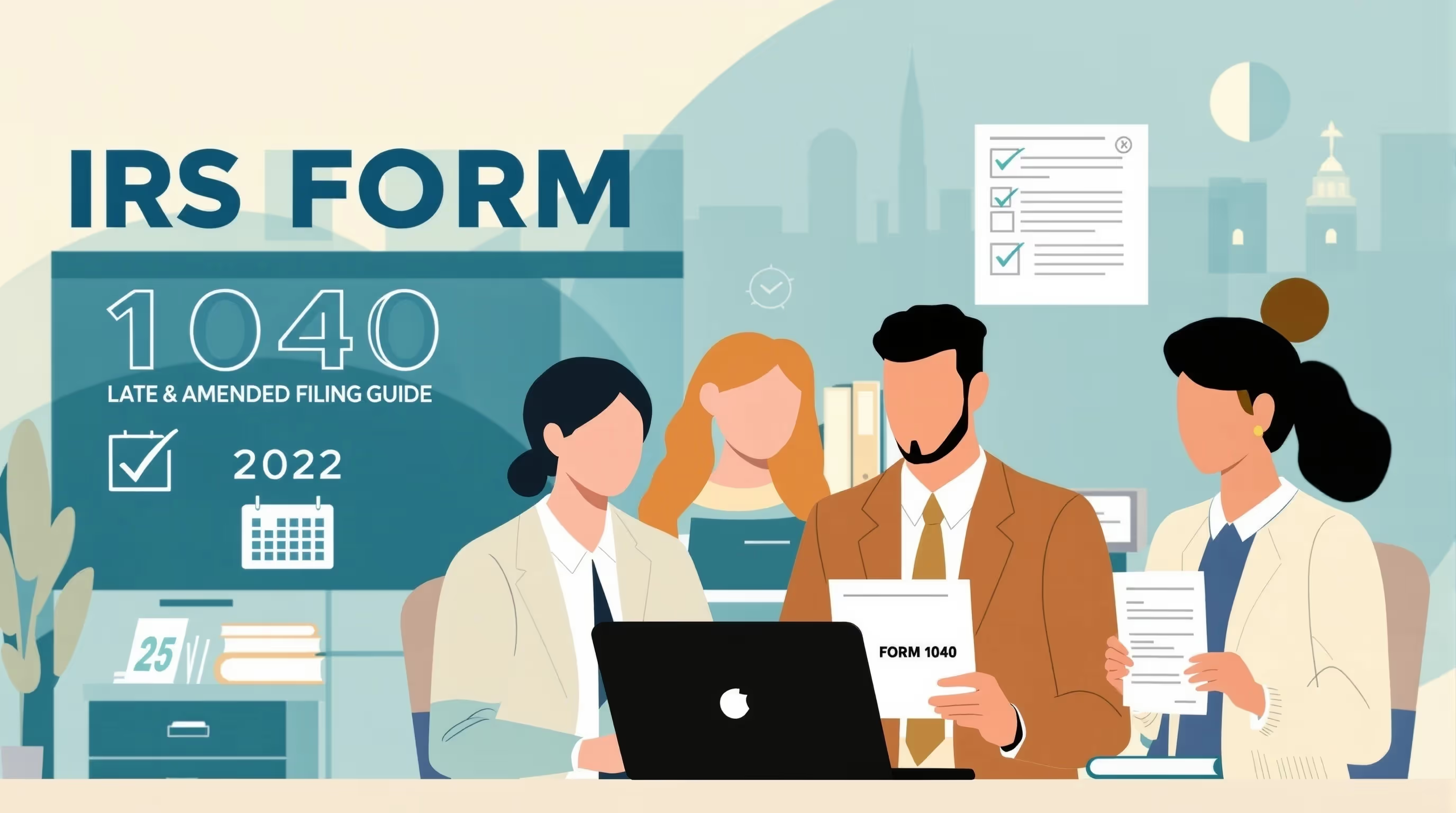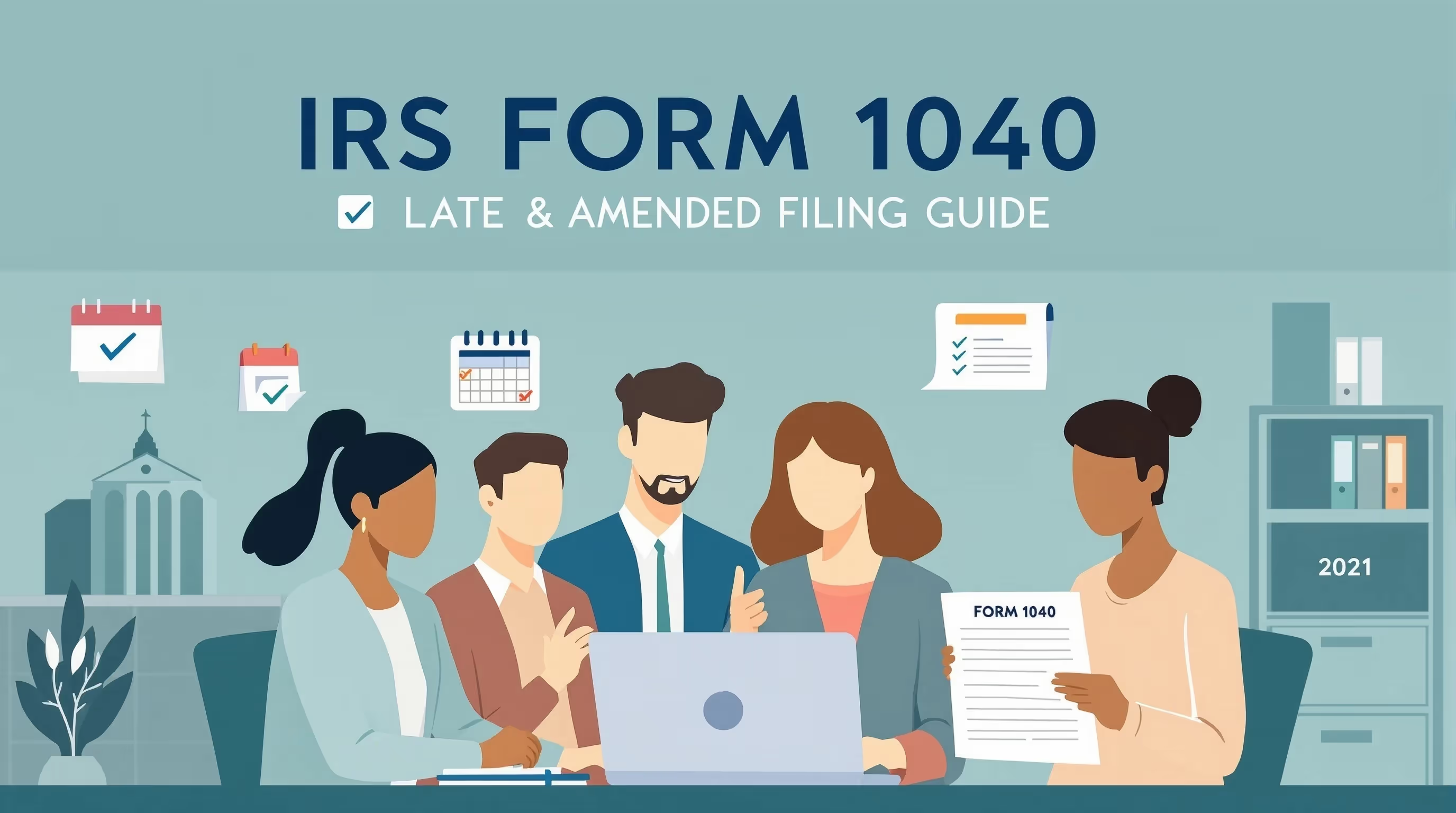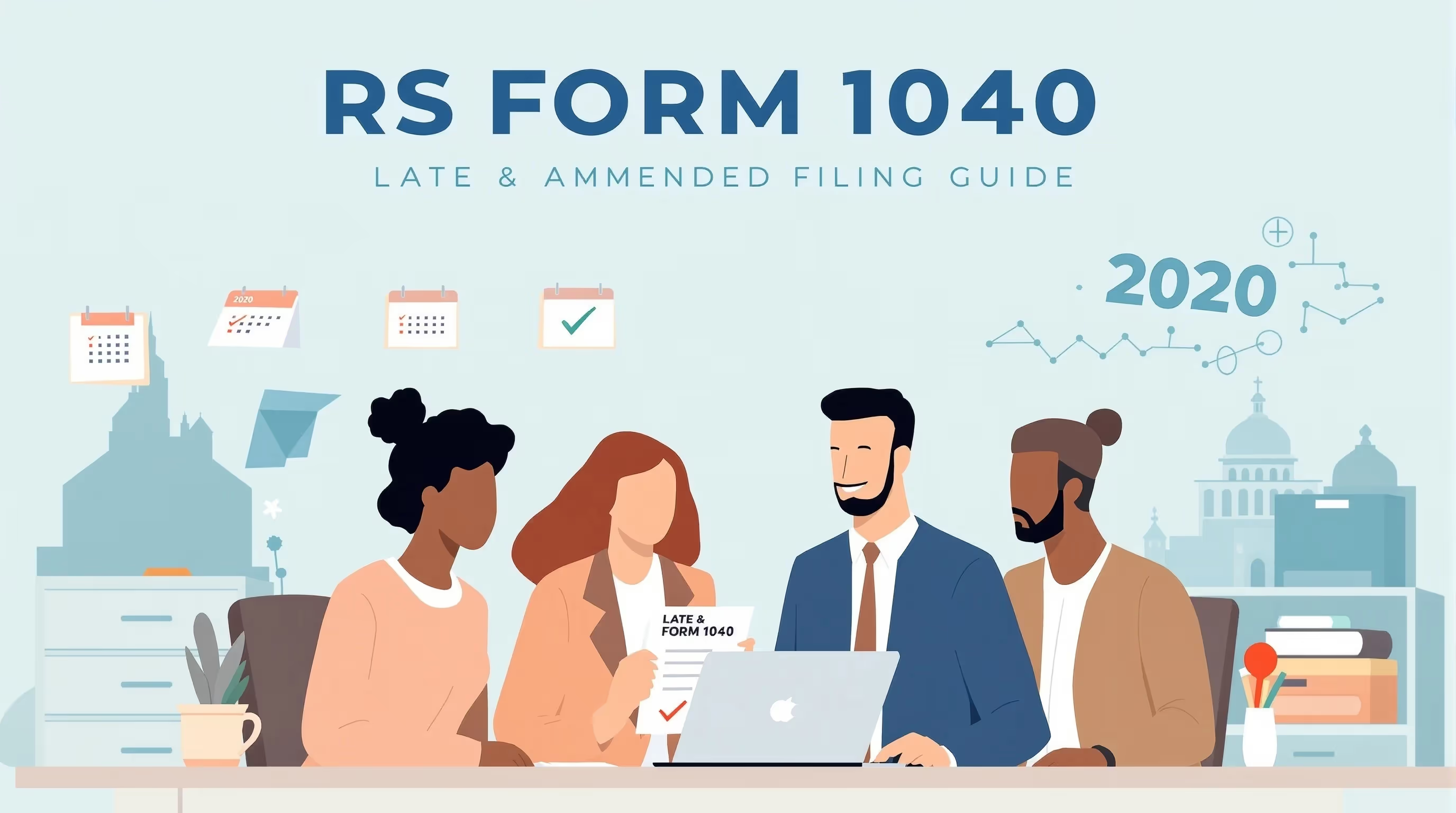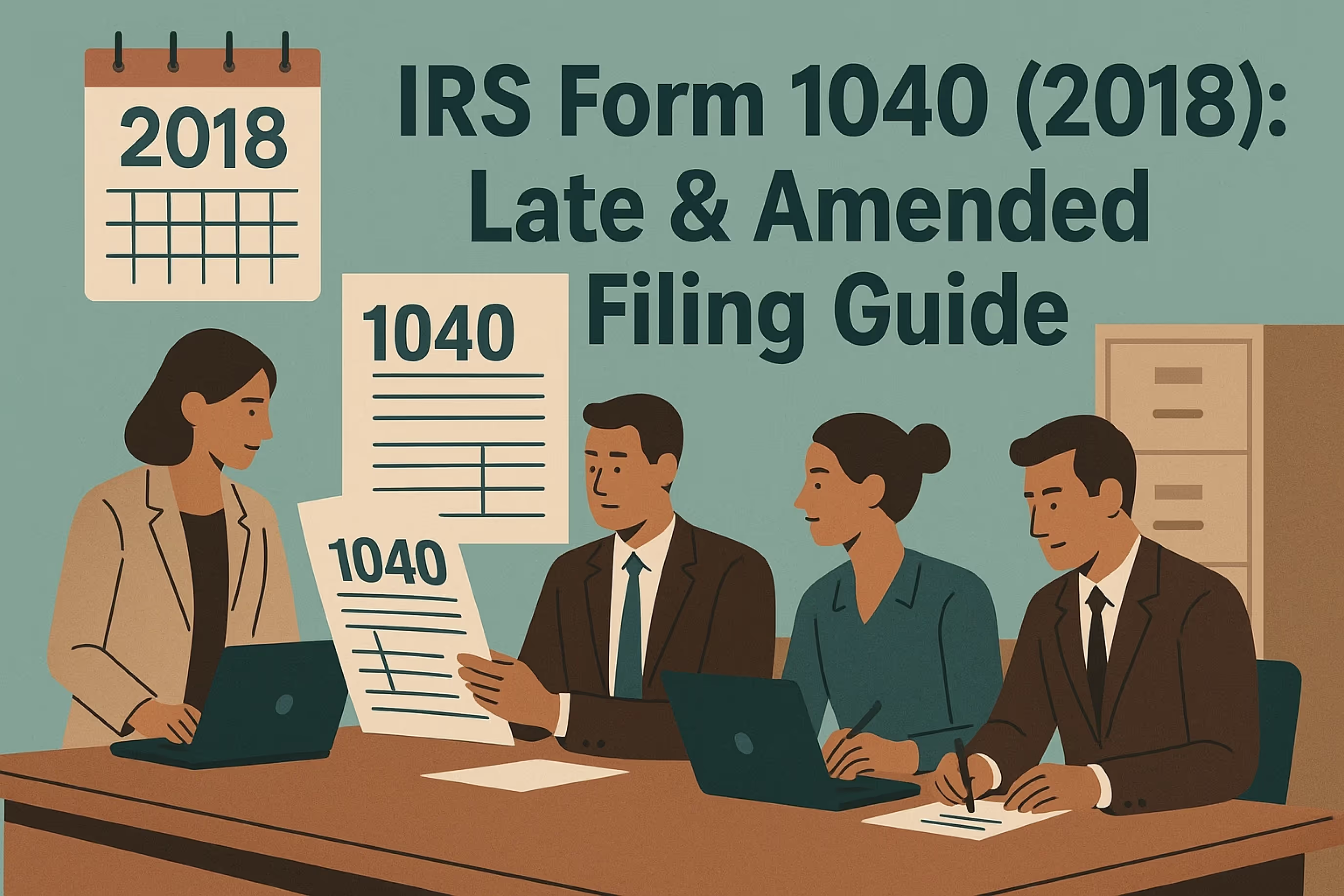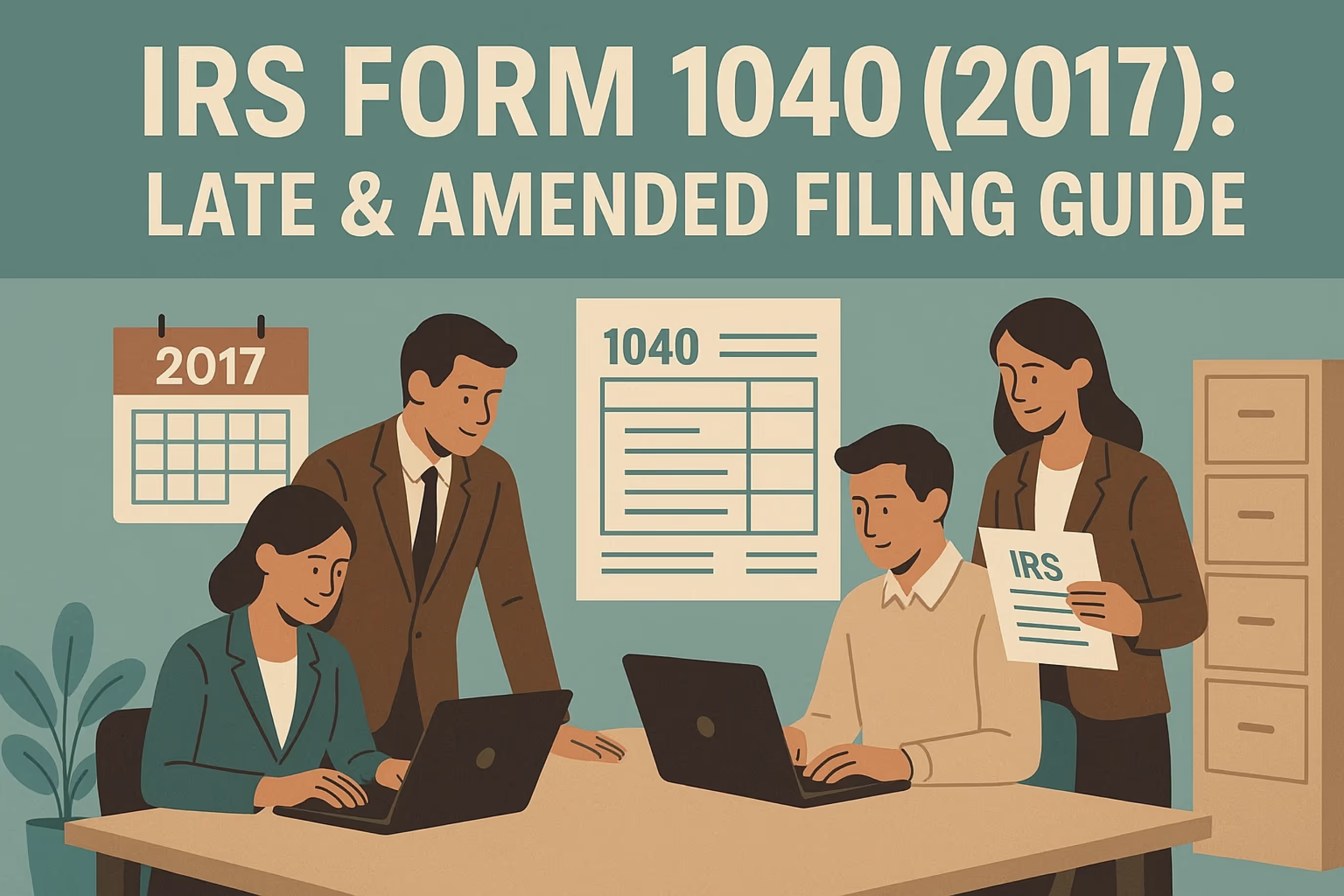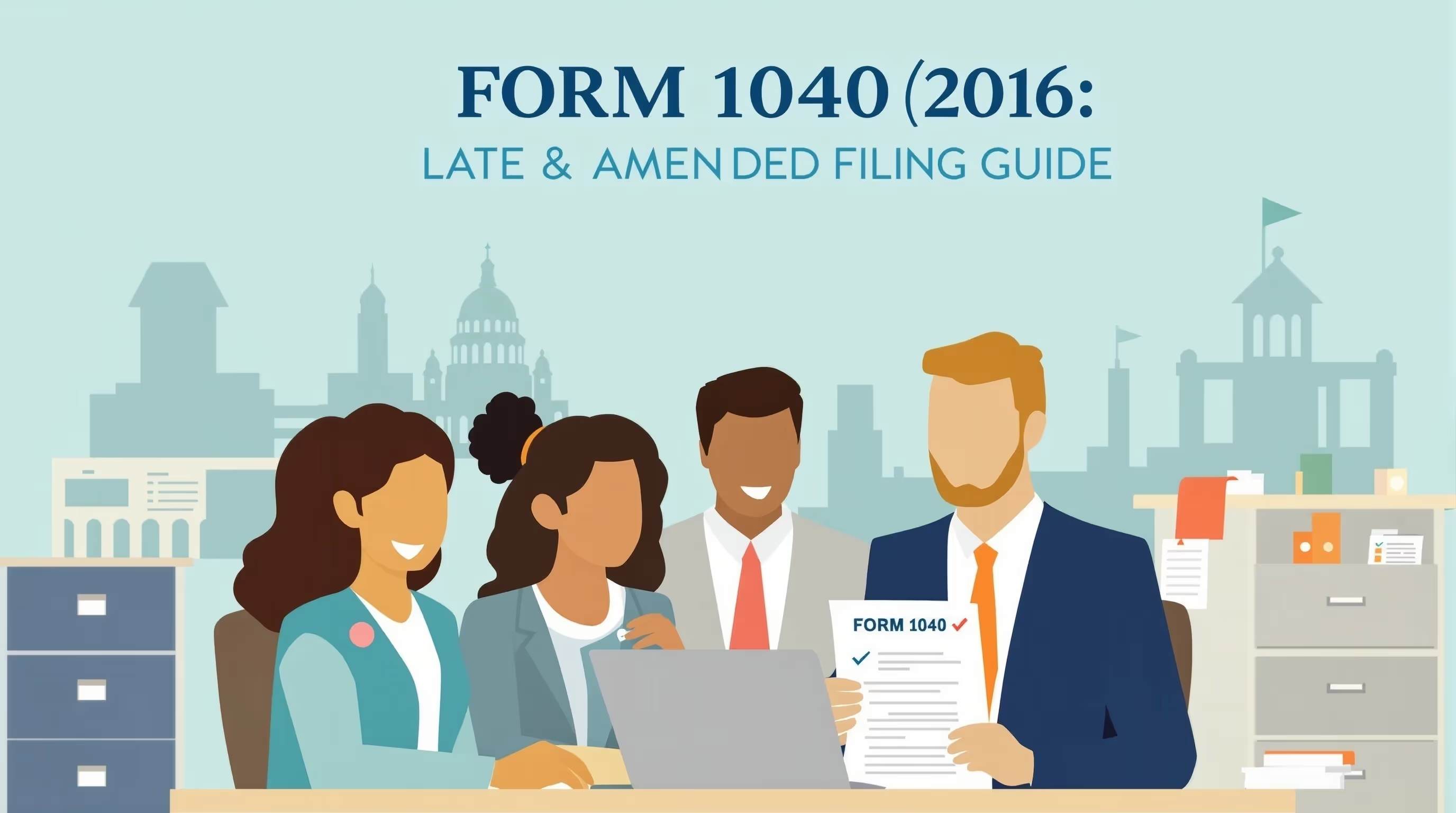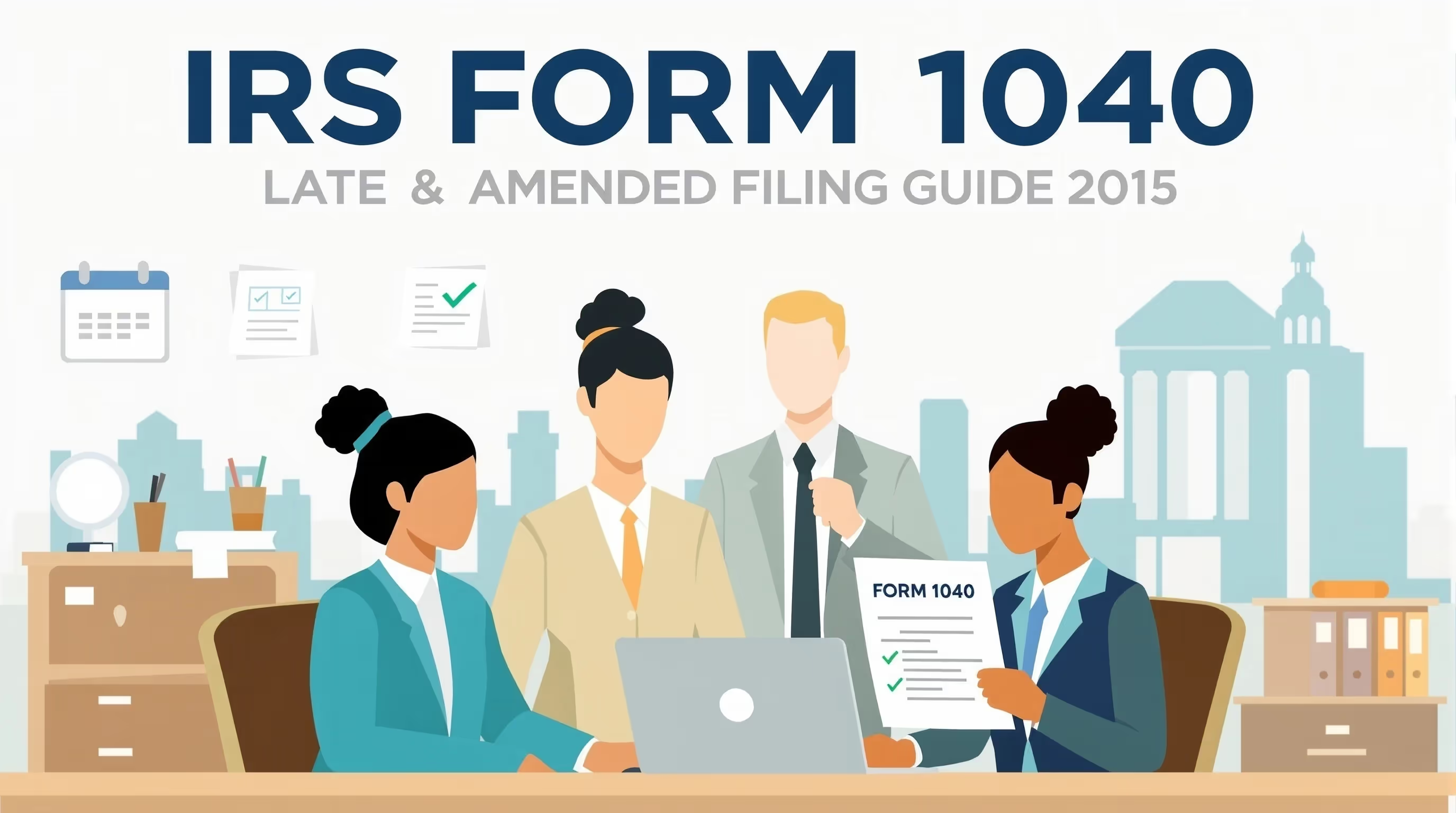IRS Form 1040 (2019): Late & Amended Filing Guide

What IRS Form 1040 (2019) Is For
IRS Form 1040 (2019) is the federal income tax return used by taxpayers to report wages, business income, deductions, and credits for the 2019 tax year. Anyone meeting IRS income requirements must file this form to determine if they owe tax, qualify for a refund, or can claim tax credits.
The 2019 Form 1040 also covers self-employed earnings and deductions, such as the student loan interest deduction. Using the correct 2019 forms and schedules ensures accurate filing and prevents delays. Taxpayers can download the official forms and instructions from the IRS website.
When You’d Use Form 1040 for 2019 (Late or Amended Filing)
You should file a late 2019 federal income tax return if you missed the original due date or an approved extension to file. Taxpayers who received IRS notices, such as CP504 or CP2000, indicating missed income, wages, or an outstanding balance should file immediately to reduce interest charges and avoid penalties. Filing a late or amended federal return—especially if you owe tax or have unreported income—helps you meet legal requirements and avoid future enforcement actions. Learn how to resolve unfiled federal returns even after the IRS deadline.
If you already filed but discovered missed deductions, credits, or reported errors, you can apply to correct them using Form 1040X (Amended U.S. Individual Income Tax Return). Generally, you have three years from the filing date or two years from the time you paid the tax to amend. Filing a late or amended federal return—especially if you owe tax or have unreported income—helps you meet legal requirements, avoid future enforcement actions, and keep your income tax records up to date.
Key Rules Specific to the 2019 Tax Year
The 2019 tax year included several important updates that affect how you file your federal return:
- Standard deduction amounts increased to $12,200 for singles, $24,400 for married individuals filing jointly, and $18,350 for heads of household.
- The individual shared responsibility payment (also known as the health insurance mandate penalty) was eliminated.
- The redesigned Form 1040 introduced numbered schedules (1, 2, and 3) for additional income, taxes, and credits.
- Capital gains were reported directly on Form 1040 line 6.
- IRA distributions and pensions were shown separately on lines 4a and 4b, as well as on lines 4c/4d.
Need help responding to IRS notices or settling back taxes? Our team offers IRS tax relief services to guide you through payment plans, penalty reduction, and resolution options.
Step-by-Step: How to File Your 2019 Federal Income Tax Return
Step 1: Gather Tax Transcripts
Request Wage & Income Transcripts and Account Transcripts from IRS.gov/Get-Transcript to confirm reported wages, payments, and deductions. Comparing these with your records helps ensure accuracy and prevents missing income or duplicate filings.
Step 2: Complete the Correct Forms
Use only the 2019 versions of Form 1040 and related schedules, available at IRS.gov/Prior-Year-Forms. Using current-year forms can cause rejection or delay in processing your federal return.
Step 3: Attach Required Schedules
Attach Schedules 1–3 as needed for additional income, deductions, or credits not claimed on the main form. These schedules are required if you have business income, certain deductions, or payments that affect your refund or remaining balance.
Step 4: Electronically File or Mail Your Return
You can electronically file (e-file) your 2019 return if your tax software still supports that year. Otherwise, mail your completed forms to the address listed in the 2019 instructions. Filing electronically is faster and helps reduce processing time and errors.
Step 5: Keep Copies and Records
Keep copies of your return, schedules, and supporting documents for at least three years. If you filed late, note the filing date and any payments made to track penalties and interest.
If you need additional time to file, you can request an extension by filing Form 4868. However, extensions only provide more time to file, not more time to pay. Payments for any remaining balance must still be made by the original due date to avoid interest charges and penalties.
Taxpayers can download the official 2019 forms and instructions from the IRS Form Help Center to ensure accuracy.
Common Mistakes and How to Avoid Them
- Using current-year forms instead of 2019 versions: Always confirm “2019” appears at the top of each page.
- Not reconciling income with IRS transcripts before filing: This step ensures all wages and reported income are included.
- Miscalculating penalties and interest: The IRS automatically calculates what you owe, so it’s best not to estimate.
- Forgetting required schedules or deductions: Review the 2019 instructions to see which forms apply to your situation.
- Missing signatures or dates: Returns without signatures are invalid and will be rejected.
- Ignoring state filing requirements: Most taxpayers are required to file a state tax return for 2019, even if they file late.
If you need help communicating with the IRS, consider appointing a licensed tax professional through a Power of Attorney to act on your behalf.
What Happens After You File
After you file your 2019 federal return, the IRS processes it and sends notices detailing any balance due, penalties, or interest charges. Paper filings usually take 6–8 weeks to process, while electronically filed returns are typically processed within 2–3 weeks.
If you owe tax, you can apply for a payment plan using Form 9465 or the IRS Online Payment Agreement tool. See our IRS payment plan guide to understand eligibility and plan types. These services let you make electronic payments and avoid additional penalties while you pay down your balance.
If you disagree with an IRS adjustment, you have the right to appeal. Refer to Publication 5 for detailed appeal procedures or consult a qualified tax professional to help review your case. You may qualify for IRS penalty abatement under first-time relief or reasonable cause if you act promptly and meet specific requirements.
FAQs
What penalties apply for filing my 2019 return late?
The failure-to-file penalty is 5% of unpaid tax per month (up to 25%), and the failure-to-pay penalty is 0.5% per month of the remaining balance. Interest continues to be charged until the full amount is paid. There is no failure-to-file penalty if you are due a refund.
Can I still get a refund for 2019?
Generally, no. The three-year refund period expired on April 18, 2023. However, you should still file your 2019 federal income tax return to avoid additional penalties and meet filing requirements.
How do I get my 2019 tax transcripts?
You can request Wage & Income or Account Transcripts online at IRS.gov/Get-Transcript, by calling 800-908-9946, or by submitting Form 4506-T by mail.
Should I also file a state tax return for 2019?
Yes, most states require you to file a state tax return for the same year as your federal tax return, even if it is filed late. Check your state tax agency’s website for requirements and due dates.
What if I need to correct my 2019 return after filing?
File Form 1040X (Amended U.S. Individual Income Tax Return) to correct errors or claim missed credits or deductions. You generally have three years from the original due date or two years from when you paid the tax to file an amendment.
Can I e-file a 2019 return now?
Some software providers still allow e-filing for past returns. Check availability or speak with a tax professional if you must mail your 2019 return instead.
What if I receive IRS notices while preparing my late return?
Respond to all IRS notices by the date shown. If you’re in the process of filing, contact the IRS immediately to explain your situation, which may temporarily pause collection activity.








